April 2022
| PIETMAN BOTHA, INDEPENDENT AGRI- CULTURAL CONSULTANT |
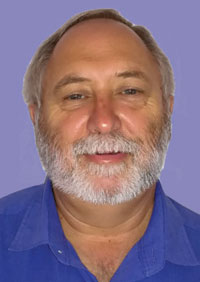 |
Thorn apple and cocklebur are very common weeds in most crop producing regions of South Africa. These weeds are known to be poisonous to humans. If grain is delivered with some of the weed seed in the grain, the grain will be rejected and sent for cleaning. The cleaning cost is for the producer’s pocket – and it can be a high price to pay.
This is not the only cost for farmers as these weeds can have a severe negative impact on the crop yield if left unmanaged. Fortunately in maize, these weeds are not as difficult to manage as in broadleaf crops.
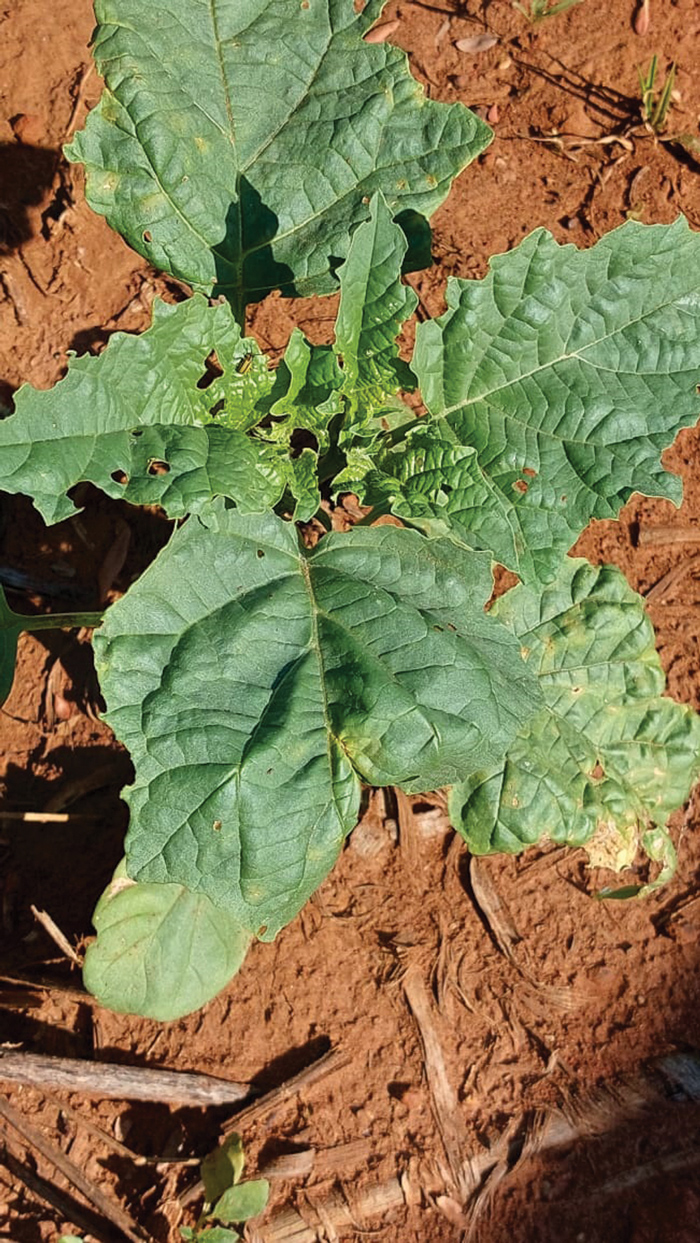
A young thorn apple plant.
CONTROLLING THORN APPLE AND COCKLEBUR
The weeds are sensitive to the most broadleaf herbicides. If the correct herbicides are applied on time these weeds will not be a problem. There will however always be some weeds that germinate very late in the season and it is these weeds that will cause the problem at the silo.
Thorn apple or Olieboom and cocklebur or Kankerroos are known to grow aggressively. The weed germinates easily and can become a big headache for farmers. These two weeds will germinate early in the season and will keep on germinating until late in the season, which makes it a difficult weed to control.
Farmers should always have a good weed control programme which will control the establishment of these weeds. If chemical control is not effective, then mechanical methods should be implemented, even if it means hoeing by hand. If farmers fail to do this then they will suffer the consequences when it comes to harvesting time and the following years.
2,4-D Amine
In maize there is a herbicide that will control the pest after germination. 2,4-D Amine is an example of a herbicide that will control it effectively. It is important to contact your herbicide representative for more information because if it is not used correctly 2,4-D can harm your maize crop. It is a costly action to control the weed chemically.
Hoeing by hand
Hand hoeing is also a costly exercise as minimum wages have to be paid. If the weed is controlled by hand with hoeing it is important to collect the weeds and to take it out of the fields. It does not help hoeing the weed down but leaving it in the field and allowing the weed to spread its seed when it is dry.
Seed pods
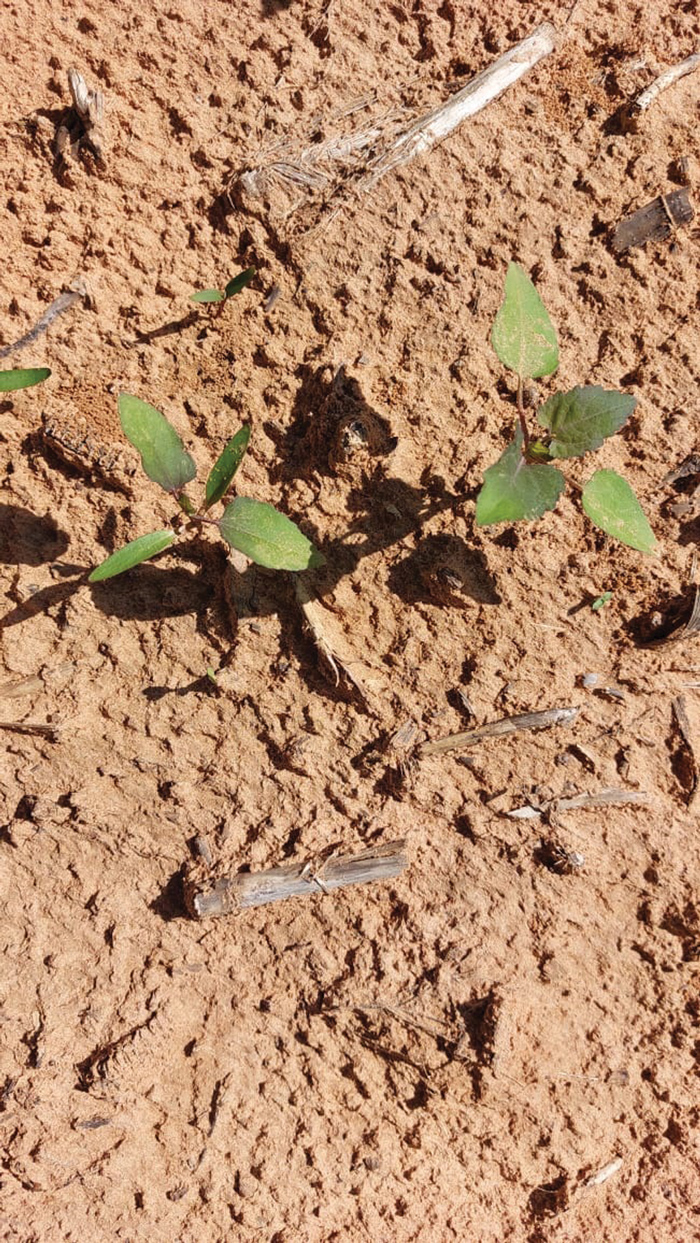
Cocklebur seedlings.
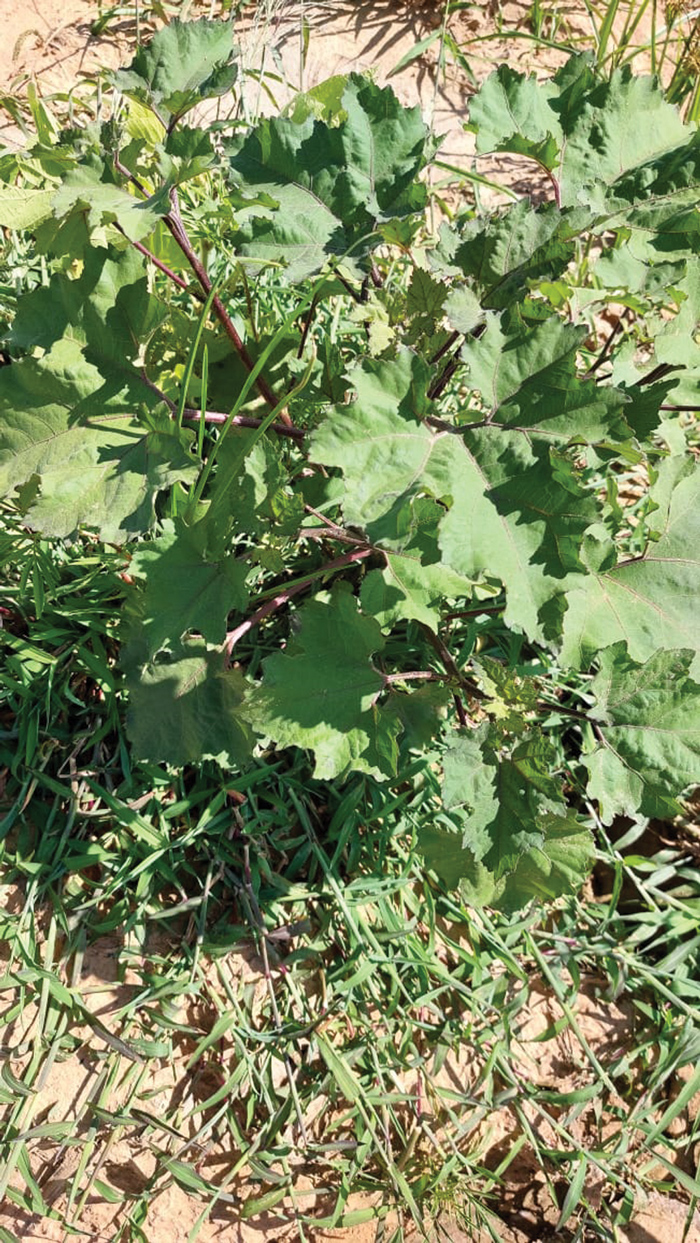
Although the Cocklebur (Xanthium strumarium) has many medicinal properties, it is not a crop farmer’s friend.
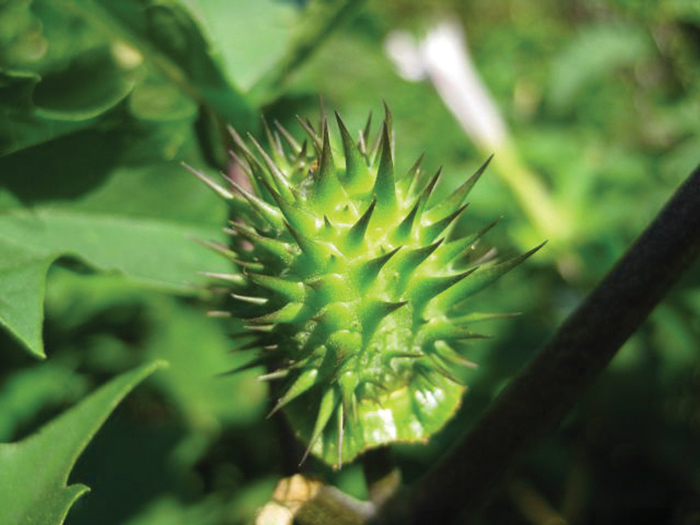
Thorn apple’s scientific name is Datura species. The name datura comes from the Hindu word, dhatura, which means thorn apple.
BEST AGRICULTURAL PRACTICES ARE KEY
The control of Thorn apple and Cocklebur in sunflower is very difficult in the case of conventional cultivars. There are herbicides that can control the weeds. Planting Clearfield sunflower cultivars makes it possible to control these weeds easily and effectively. In the case of soybean production these weeds are not a problem if a Roundup ready cultivar is planted.
From the above information it is clear that the effective control of Thorn apple and Cocklebur starts the year before the crop is planted. At the end of the year look for these common weeds in the fields. Select a crop that is able to control the weeds.
It is clear that the prevention of the weeds growing is important for the delivery of weed free grain to the silo. There is no excuse for delivering weed seed in grain to the silo other than not applying the best practices available to farmers.
Publication: April 2022
Section: Pula/Imvula